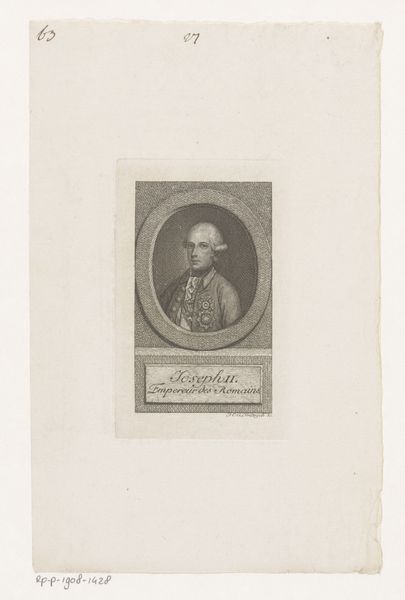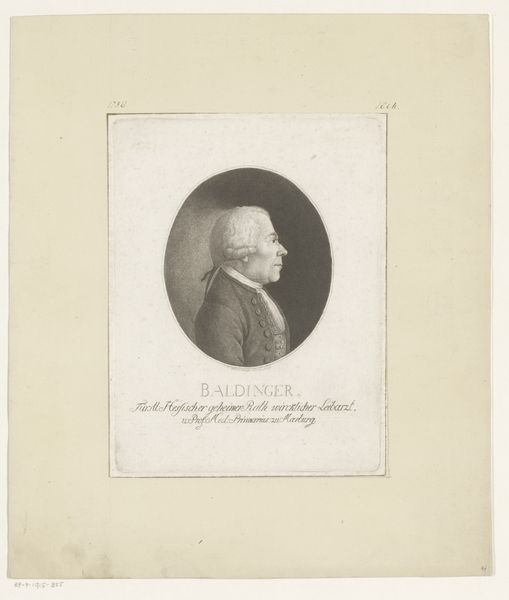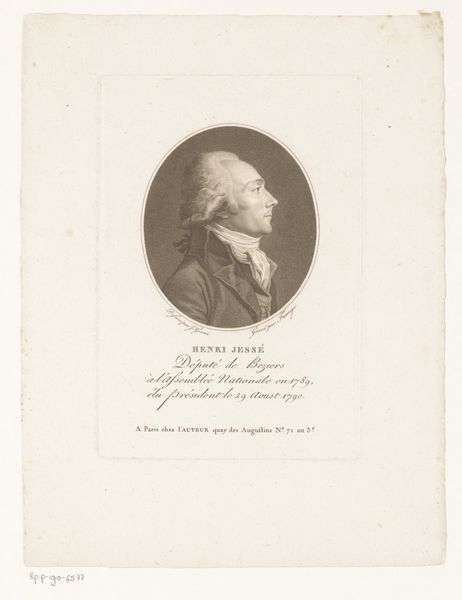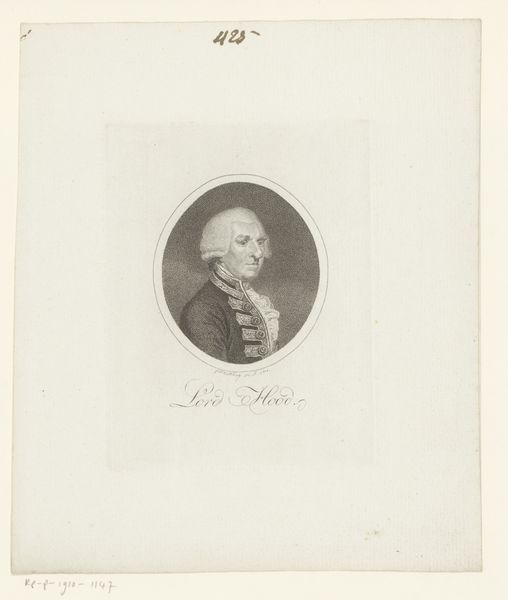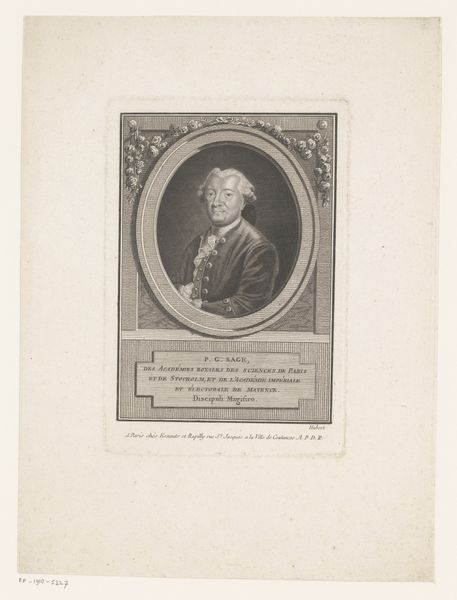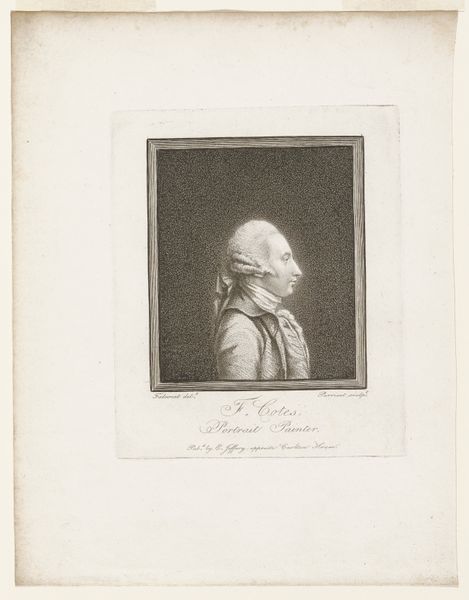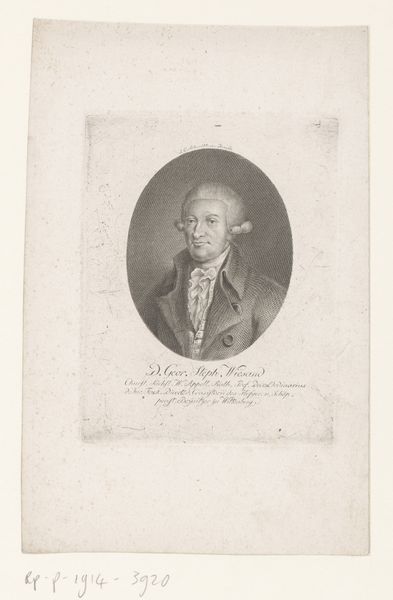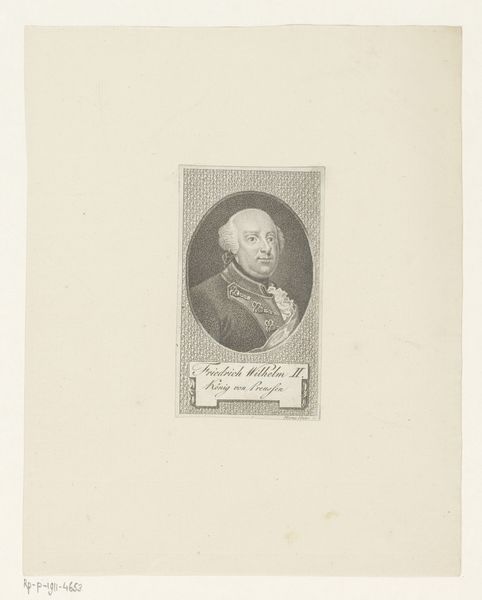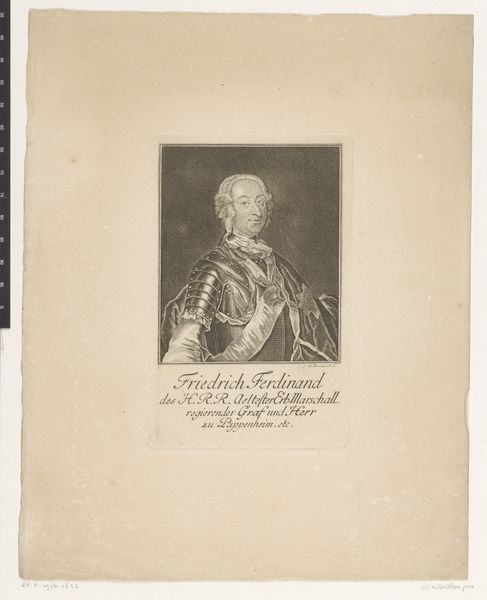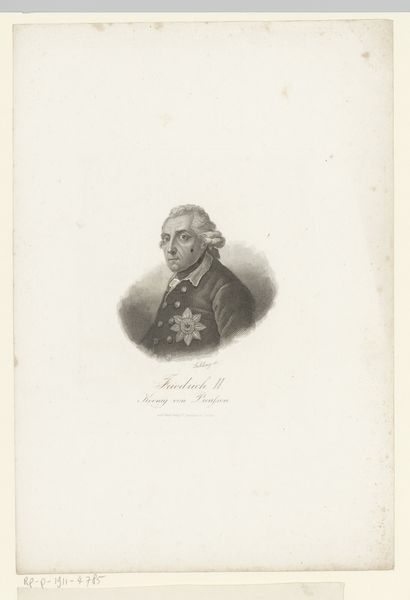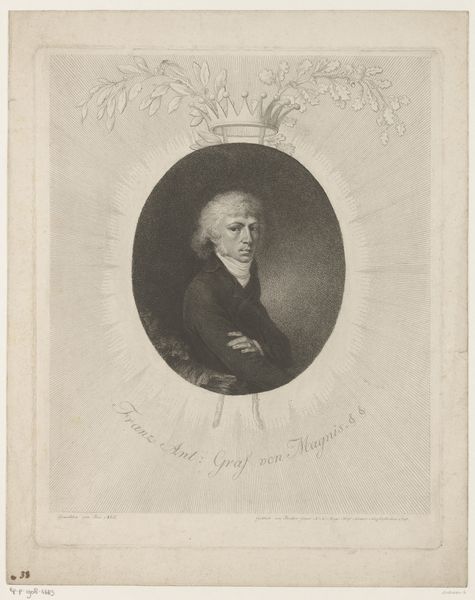
Dimensions: height 327 mm, width 226 mm
Copyright: Rijks Museum: Open Domain
Editor: This is a print titled "Portret van Jozef Wenceslaus van Liechtenstein," made in 1769. The Rijksmuseum collection attributes it to James Watson. It has such a poised and elegant feel to it. What symbols jump out at you in this engraving? Curator: The symbols aren't always what's overtly depicted, but rather how the depiction resonates. Consider the formal posture, the elaborate attire. It’s Baroque, clinging to those displays of status, yet it's on the cusp of the Enlightenment, where reason began challenging such displays. Do you notice the way the light falls? Editor: Yes, it's quite dramatic. Almost theatrical. The light seems to spotlight his face and hand, but leaves the rest somewhat in shadow. Curator: Exactly. Light and shadow aren't just aesthetic here. Light represented knowledge, divine approval, and in the context of royalty, rightful authority. Shadows, conversely, are the unknown, perhaps even doubt. Placing Liechtenstein in this visual dynamic acknowledges that he exists at a fascinating juncture. Think of what royalty signified in the collective psyche of the 18th century and the anxieties and assurances this kind of imagery was meant to address. Does that change your perception? Editor: It does. I initially saw elegance, but now I see that there's a more complex story. There's the old order clinging to its symbols, maybe even sensing that those symbols are about to lose their power. Curator: Precisely. It makes you consider what symbols we still carry, consciously or unconsciously, and how they affect us. Editor: This was incredibly insightful, a wonderful demonstration of art history, thank you.
Comments
No comments
Be the first to comment and join the conversation on the ultimate creative platform.
